“It’s exciting and we can’t wait to learn more”- horses to wear heart rate monitors in BHA pilot
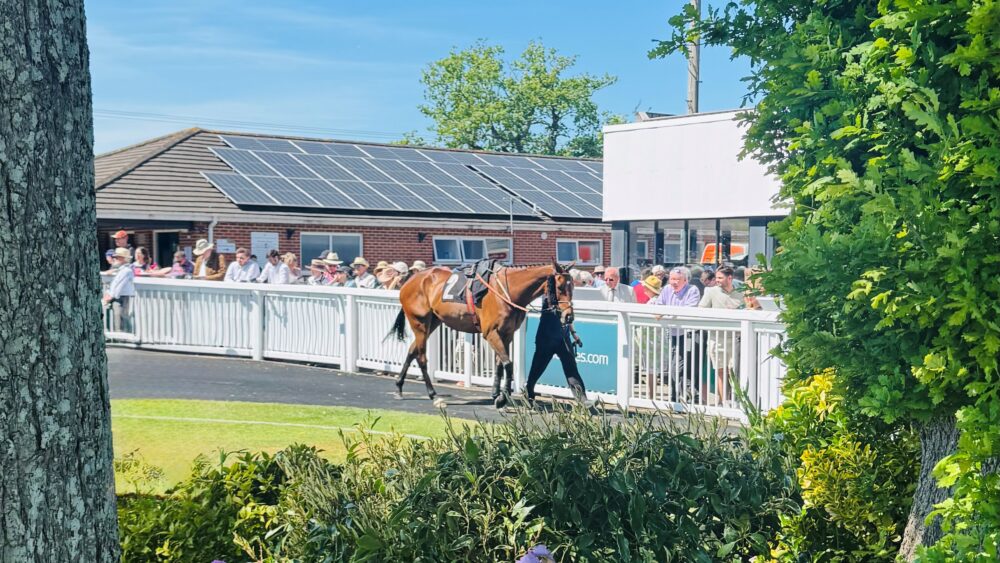
Like all major sports, advances in technology and data science are playing an increasingly important role across British racing, especially when it comes to improving horse welfare, safety and performance.
And last week’s season finale at Plumpton saw another digital dawn for the sport, with Ted’s Friend becoming the first horse to wear a heart monitor while competing under the Rules of Racing on a British racecourse.
Ridden by Max Kendrick and trained by Fergal O’Brien, Ted’s Friend was fitted with a bespoke Arioneo Equimetre device as part of a British Horseracing Authority (BHA) backed pilot scheme to test the use of the technology under race conditions.
Data-driven improvements
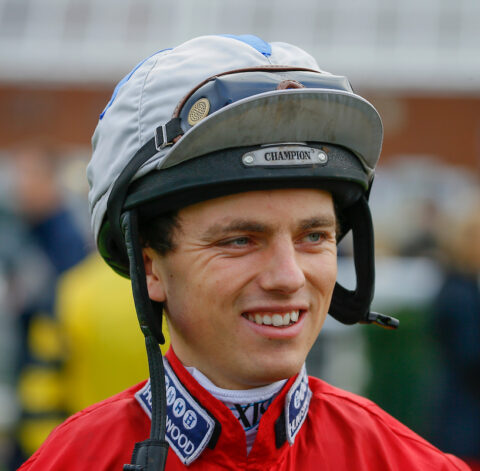
Max Kendrick: “It’s about making better informed decisions in the best interests of horses”
Wearable equipment is already widely used by racehorse trainers at home and on the gallops to monitor a horse’s heart rate and activity, stride length and speed during exercise.
This real-time data collection and analysis offers a valuable insight into the horse’s health and wellbeing, which can help optimise performance and support better informed planning around areas like training regimes, rest periods and readiness to race.
Now assistant trainer at Ravenswell following his recent retirement from the saddle, Max Kendrick has taken a keen interest in expanding the use of wearable technology since joining Fergal O’Brien’s yard in 2023.
“Growing the use of monitoring and data analysis can only be a good thing, from both a performance and equine welfare point of view,” he said.
“We’ve been gradually increasing the use of data analysis at Fergal’s and monitor the horses throughout their training. But until now it’s not been possible to extend this tracking to the race itself, which to us felt like a real gap in our knowledge and understanding.”
Developing the pilot
The O’Brien team has worked closely with the BHA over several months to scope and plan the pilot, which will initially see the Arioneo Equimetre device carried by 10 of the yard’s horses racing over various obstacles and distances.
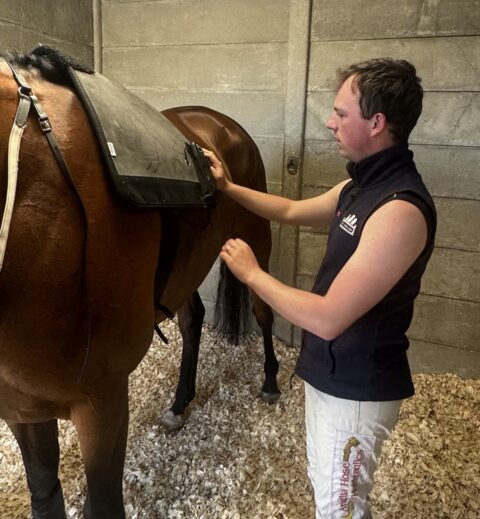
The device is fitted via surcingle and using a bespoke pad
Prior to the race at Plumpton, the equipment had been tested extensively in the presence of BHA officials at the training yard and over jumps and extended distances at Chaddesley Corbett point-to-point circuit, with a view to ensuring it is safe to use on raceday.
The device, which is fitted via surcingle and using a bespoke pad, is included as part of the weight the horse is required to carry and remains on the horse after unsaddling so that the heart rate can be monitored before, during and after the race.
Leading the project for British racing’s governing and regulatory body is the BHA’s Head of Equine Regulation, Safety and Welfare, Sally Taylor.
“Racehorse trainers are often at the forefront of innovation in our sport,” she said, expressing the industry’s desire to embrace the latest technology to support improved horse welfare outcomes.
“Data, technology and scientific research have an essential role to play in improving safety, reducing the risk of injury and strengthening British racing for the long-term.
“Wearable devices are a particularly interesting area, giving us the ability to measure a horse’s cardiovascular health, activity and performance during exercise using an electrocardiogram (ECG).”
How the data will be used
The data collected over the initial 10-race period will be available to the O’Brien yard to complement the information it already holds about the horses that will be participating in the pilot.
But more significantly, it will be shared with researchers at the University of Surrey, who will use the information to support and inform ongoing studies aimed at reducing the risk of avoidable injuries and fatalities.
British racing has invested more than £56 million in advancing equine health, veterinary science and research over the past 25 years – and there are several projects currently underway in this space.
This includes work to use artificial intelligence techniques to help identify horses at greater risk of developing irregular heart rhythms, and research into the causes of exercise associated sudden death.
It is also thought that a horse carrying an undetected injury that could lead to fracture may show changes in their stride pattern beforehand.
An encouraging start – with more to come
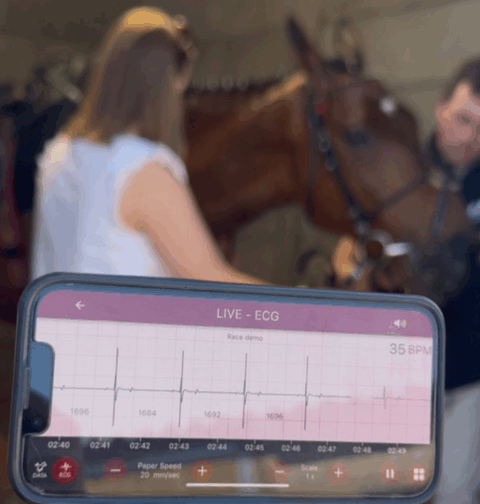
The electrocardiogram measures heart activity before, during and after exercise
“The signs so far are very encouraging,” reflected Sally, following the first day of the pilot. “We always knew that day one would primarily be about examining some of the practical aspects of using the kit.
“For example, making sure it didn’t become dislodged during the race and that everything was done properly from a regulatory perspective. The support we received from officials on the racecourse was essential in helping make sure everything went smoothly and we are very grateful for their assistance.
“The preliminary analysis indicates that the device performed well. We need to review this in much more detail before reaching any definitive conclusions, but the initial heart rate and ECG tracking provided a fascinating insight into the horse’s condition and performance.
“We’ve also been able to identify some minor adjustments that can be made to further enhance the quality of the data being captured.”
The device will continue to be used on the racecourse over the coming weeks, with ongoing analysis of the data followed by a more comprehensive review once the pilot has concluded.
Work is also underway to continually refine and improve the equipment itself, with the device having been specifically adapted by Arioneo for use during the pilot.
“It’s exciting and we can’t wait to learn more”
With many other racehorse trainers using monitoring equipment at home, some have already expressed their interest in taking part in a future iteration of the pilot.
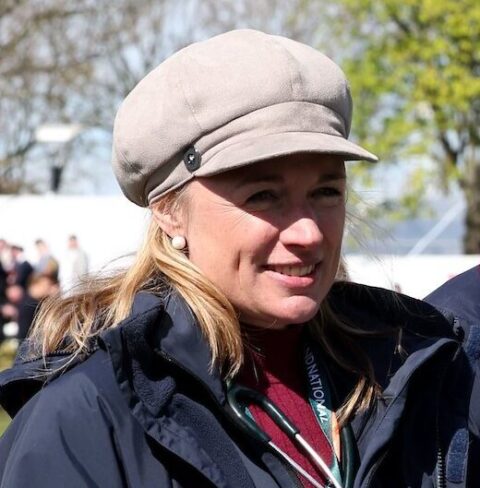
Sally Taylor: “We recognise the potential this technology offers”
“This is something we’d certainly want to explore, as we recognise the potential that this technology offers” explained Sally. “We know how valuable this equipment is to trainers in complementing their own knowledge and expertise.
“Our hope is that through the pilot we can determine whether the device is as effective at recording accurate data under race conditions as it is in a training environment.
“We will also use this period to refine the practicalities of using the kit on the racecourse, making sure we have the right processes in place from a raceday and regulatory perspective.
“If all goes well, then we’d certainly like to extend this opportunity to others and see the technology being used more widely.”
Outlining his hopes for the future of wearable technology, Max added: “We were delighted when the BHA agreed to test the technology on the racecourse, and Sally and the team there have been brilliant in arranging the pilot that’s now underway.
“Horses can’t be trained from a computer, but access to information, whether that’s from the yard or the racecourse, allows us to enhance our understanding of them as individuals, track any changes in performance levels and then adapt training techniques to suit them.
“Ultimately, it’s all about making better informed decisions that are in the best interests of the horses, their welfare and wellbeing – and we find real value in using the data to help us do that.
“We’re at a very early stage in terms of the pilot, but it’s exciting and we can’t wait to learn more.”
More information and next steps will be published once the data has been collected and reviewed following the conclusion of the pilot period.
